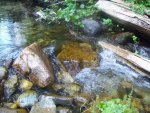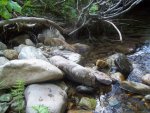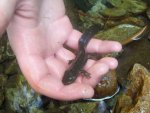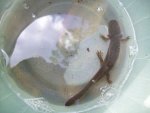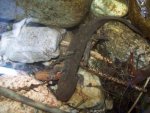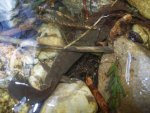I have found water temperatures to range from about 5C to about 12C, depending on stream and time of year. I've found them in various sized creeks, from trickles running beneath boulders along an avalanche path, to larger creeks/rivers several meters across. My favorite spot is a small waterfall, where large larvae and transformed juveniles hide under a couple large rocks or in cracks at the base of the falls, while other larvae occur in a small pool across the road, which is dammed by debris just before the water drops over a cliff to the river below. Their range is limited to central Idaho, plus a couple known streams in Montana, though they may occur in Oregon and Washington as well. They are not protected per se, but require a non-game or scientific permit to collect in Idaho. They can be common in places but can be a bit hit-and-miss for localities. Nowhere near as abundant as Pacific giants are. There was a good write-up in Reptiles magazine last year.


